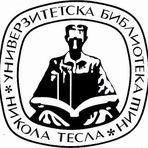Title
Optimizacija kompozitnih faktora urbanog stambenog bloka sa aspekta poboljšanja stanja mikorklime
Creator
Petrović, Nemanja P., 1988-
CONOR:
115981321
Copyright date
2024
Object Links
Select license
Autorstvo-Nekomercijalno-Bez prerade 3.0 Srbija (CC BY-NC-ND 3.0)
License description
Dozvoljavate samo preuzimanje i distribuciju dela, ako/dok se pravilno naznačava ime autora, bez ikakvih promena dela i bez prava komercijalnog korišćenja dela. Ova licenca je najstroža CC licenca. Osnovni opis Licence: http://creativecommons.org/licenses/by-nc-nd/3.0/rs/deed.sr_LATN. Sadržaj ugovora u celini: http://creativecommons.org/licenses/by-nc-nd/3.0/rs/legalcode.sr-Latn
Language
Serbian
Cobiss-ID
Theses Type
Doktorska disertacija
description
Datum odbrane: 25.6.2024.
Other responsibilities
Academic Expertise
Tehničko-tehnološke nauke
University
Univerzitet u Nišu
Faculty
Fakultet zaštite na radu
Group
Katedra za kvalitet radne i životne sredine
Alternative title
Optimization of the composite factors of the urban housing block from the aspect of improving the condition of the microclimate
Publisher
[N. P. Petrović]
Format
238 listova
description
Biografija autora: list 235
Bibliografija: listovi 225-234
description
Urban ecology
Abstract (en)
Research in this dissertation focuses on urban residential blocks as complex architectural-urbanistic functional units and generative elements of urban structure. They are considered as spatial-functional complexes, bounded by street networks, whose borders determine shape, size, dimensions, and possibilities for space organization and utilization.
The study addresses the microclimate of urban residential blocks, which is conditioned by meteorological parameters, green spaces, and physical structures within the block. The dissertation's objective is to define optimal composite factors of urban blocks for individual and collective housing to achieve better microclimatic conditions for human habitation.
Individual housing is analyzed through predictive models of standalone buildings, duplexes, and row houses, while collective housing is examined through predictive models of open, semi-closed, and closed construction types.
The software package ENVI_MET® was utilized to create a holistic microclimatic model. Simulation models were designed to conduct the research in 3 phases: analyzing the impact of block geometry, the influence of different greenery variants, and the effect of paving and façade materialization on the microclimatic conditions within the block. Besides the impact on the microclimate of the urban residential block, the influence of composite factors on the Physiological Equivalent Temperature (PET) and heat stress of space users was analyzed.
The application of paving materials with high albedo values is identified as a dominant factor in lowering ambient air temperature. Greening variants combining vertical greenery are more effective in reducing ambient air temperature compared to exclusively horizontal greenery. The most favorable models in terms of Physiological Equivalent Temperature values and physiological stress categorization have been: the individual housing model with standalone buildings, greenery variants with a green roof, ground-level greenery, and street trees, the use of materials with low
albedo values in paving, and the use of materials with low albedo values in façade materialization, and the collective housing model of closed block construction, greenery variants with a green roof, ground-level greenery and trees, paving materialization with high albedo value materials, and façade materialization with low albedo value materials.
Authors Key words
Bioklimatsko planiranje, urbani stambeni blok, efekat staklene bašte, mikroklima, toplotni komfor, zaštita životne sredine
Authors Key words
Bioclimate planning, urban housing block, Urban heat island effect, microclimate, thermal comfort, environmental protection
Classification
711.4:628.8:551.58(043.3)
628.8
551.58
Subject
T270
Type
Tekst
Abstract (en)
Research in this dissertation focuses on urban residential blocks as complex architectural-urbanistic functional units and generative elements of urban structure. They are considered as spatial-functional complexes, bounded by street networks, whose borders determine shape, size, dimensions, and possibilities for space organization and utilization.
The study addresses the microclimate of urban residential blocks, which is conditioned by meteorological parameters, green spaces, and physical structures within the block. The dissertation's objective is to define optimal composite factors of urban blocks for individual and collective housing to achieve better microclimatic conditions for human habitation.
Individual housing is analyzed through predictive models of standalone buildings, duplexes, and row houses, while collective housing is examined through predictive models of open, semi-closed, and closed construction types.
The software package ENVI_MET® was utilized to create a holistic microclimatic model. Simulation models were designed to conduct the research in 3 phases: analyzing the impact of block geometry, the influence of different greenery variants, and the effect of paving and façade materialization on the microclimatic conditions within the block. Besides the impact on the microclimate of the urban residential block, the influence of composite factors on the Physiological Equivalent Temperature (PET) and heat stress of space users was analyzed.
The application of paving materials with high albedo values is identified as a dominant factor in lowering ambient air temperature. Greening variants combining vertical greenery are more effective in reducing ambient air temperature compared to exclusively horizontal greenery. The most favorable models in terms of Physiological Equivalent Temperature values and physiological stress categorization have been: the individual housing model with standalone buildings, greenery variants with a green roof, ground-level greenery, and street trees, the use of materials with low
albedo values in paving, and the use of materials with low albedo values in façade materialization, and the collective housing model of closed block construction, greenery variants with a green roof, ground-level greenery and trees, paving materialization with high albedo value materials, and façade materialization with low albedo value materials.
“Data exchange” service offers individual users metadata transfer in several different formats. Citation formats are offered for transfers in texts as for the transfer into internet pages. Citation formats include permanent links that guarantee access to cited sources. For use are commonly structured metadata schemes : Dublin Core xml and ETUB-MS xml, local adaptation of international ETD-MS scheme intended for use in academic documents.


